|
Seedling and Plant Identification of Your Garden SeedsThe images below will give you a good idea of what to expect when your peas and peppers germinate. This will help to avoid accidentally pulling them as weeds. Peas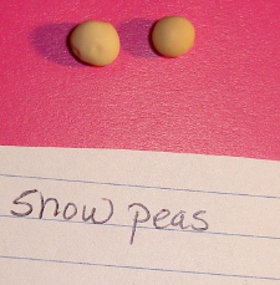
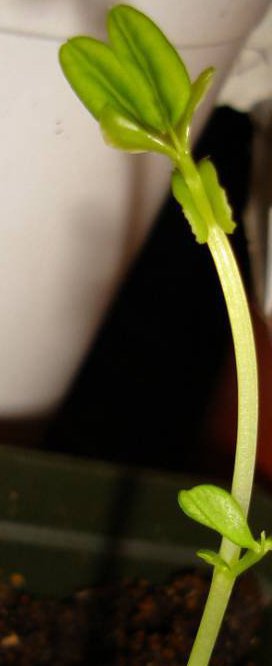
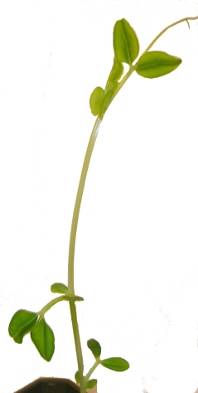
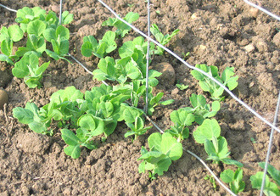
The photo at the left is for snow pea seeds, but regular peas look very similar. The growth habits are also very similar. These are cool weather crops, best planted in early spring or for a fall crop. The next photo should help help you with seedling and plant identification. Peas, like beans, are legumes, and add nitrogen to the soil. They are a good crop to use when replacing an already harvested vegetable that was a heavy feeder, like tomatoes, okra, or corn. They can also be planted with a vegetable like corn, and use the stalk as their climbing pole in the case of a fall crop. (Corn does best in warm weather) I find that snow peas are a great choice if you like to make stir fry. They produce enough for a meal every few days, and extras can be frozen for later use. The seedling and plant identification for both peas and snow peas is very similar. Plant them about 3/4-1 inch deep. They require support as either stakes with twine, or a fence they can climb.Do not plant in full sun. Partial sun, or bright shade is better. If you can give them a spot with a complete afternoon shade you might be able to extend their season a bit. The should germinate and be coming up in 4-10 days, depending on soil temperature. Plant about 6 inches apart. Your seed package might say to put several seeds into each planting hole, but I usually just put one. Unless they are old seed, most will come up. Plant a few extra plants to make up for any that don't germinate. They grow quickly, twining their little green tendrils on the supports as they go. You won't need to tie them on to the support, they will take care of that on their own. You do need to watch for them to climb though, as if they go across the ground instead of up they will rot. So keep an eye on them to make sure they've gone up the support. Within just a couple of weeks they will begin to flower and make pods. Pick regular pea pods when they are fat and you can feel the peas are a good size. Snow peas are picked just as the peas begin to plump out, while the pod is nearly flat. Regular pea pods are not very tasty, rather fibrous. Don't leave them too long, as once the pods get too ripe or start to yellow, the peas will no longer be sweet. It takes a lot of plants to have enough peas to make for a family meal on a regular basis. Wait to pick them until just before cooking, so they have that fresh flavor. You might want to plant at least 5 plants per family member of regular peas, and 3 plants for edible pod peas per person. The edible pod peas usually are just a portion of most stir-fry recipes, so you won't need quite as many at a time. Peppers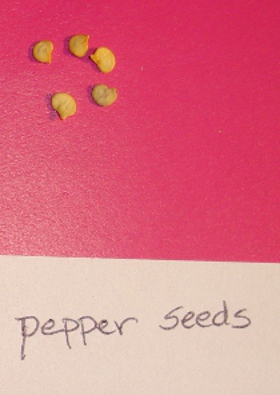
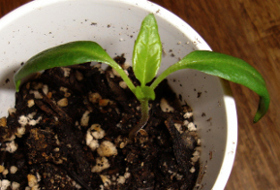
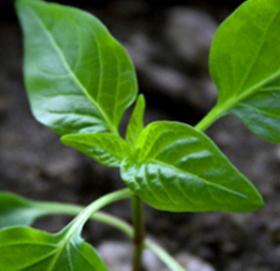
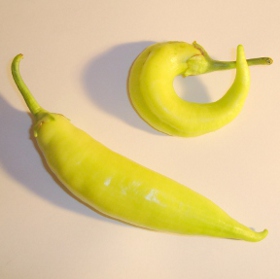
Peppers love warm weather. They do best at 80 degrees and warmer. If you want to get a head start on them, you can plant your seeds about 6 weeks before the last frost in your area, in a starter pot in the house. A medium pot can start a dozen or so small plants. They can also be direct seeded in the garden, although it will take longer for them to bear fruit. The photos should help with seedling and plant identification. There are many varieties of peppers, both type and degree of hotness. Bell peppers, Sweet Banana peppers, Pepperocini, and Gypsy are some of the mild sweet peppers. If you like the hot varieties,in ascending order of heat, there are Hot Banana and Hungarian Hot Wax peppers, Cherry Bomb, Paprika, and Anaheim Chile peppers (mildly hot), Cayenne, Serrano, and Jalapeno peppers(medium hot), and finally the ones that will send you screaming into the night hot, Tabasco, Thai Hot, Scotch Bonnet, and Habanero(extremely hot). Take care when handling any hot pepper, be sure to keep hands away from eyes, mouth, and other sensitive parts. They will retain the heat for longer than you expect and spread it. The seeds and the interior membrane or pith are especially hot. It's the capsaicin oil that produces the heat, and rubbing will make it worse. Soap and water don't remove it. It's best to wear gloves with hot peppers, but if you forget, be very cautious. There is an enzyme in milk that will dilute the oil. Peppers of the same species will cross pollinate unless there is enough distance between them. This will not affect the current pepper crop, but if you plan to save seeds, it will be something you must take into account. There are 5 species of peppers. C. annum is the species that most of the peppers grown in gardens belong to. So a bell pepper may cross pollinate with a jalapeno pepper. A tabasco pepper, which is from a different species, C. frutescens, can cross too, but is less likely to. If you want to save seeds of different varieties, use some fine netting around the plants you wish to save seed from. You can hand pollinate the flowers with it's own pollen and get true seed. Harvesting peppers can be done at almost any stage. Some get sweeter as they ripen, others get hotter. Most will go from yellow or green to red. They should be firm, and have some color change, or at least look full and taut. Be careful not to damage the plant, either snap the fruit off cleanly, or use a knife or scissor. The photo above is of the 5-6 inch long sweet banana peppers from my garden. They were just picked today. Peppers grow well in pots too, and can be overwintered in this way. I've had peppers keep producing for several years in a pot, as long as I kept it in a sunny window.
from Seedling and Plant Identification to Vegetable Gardening Advice Home |





